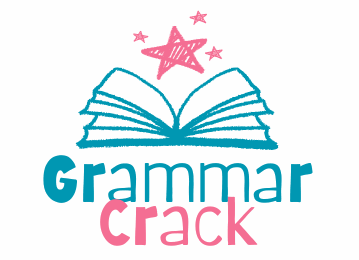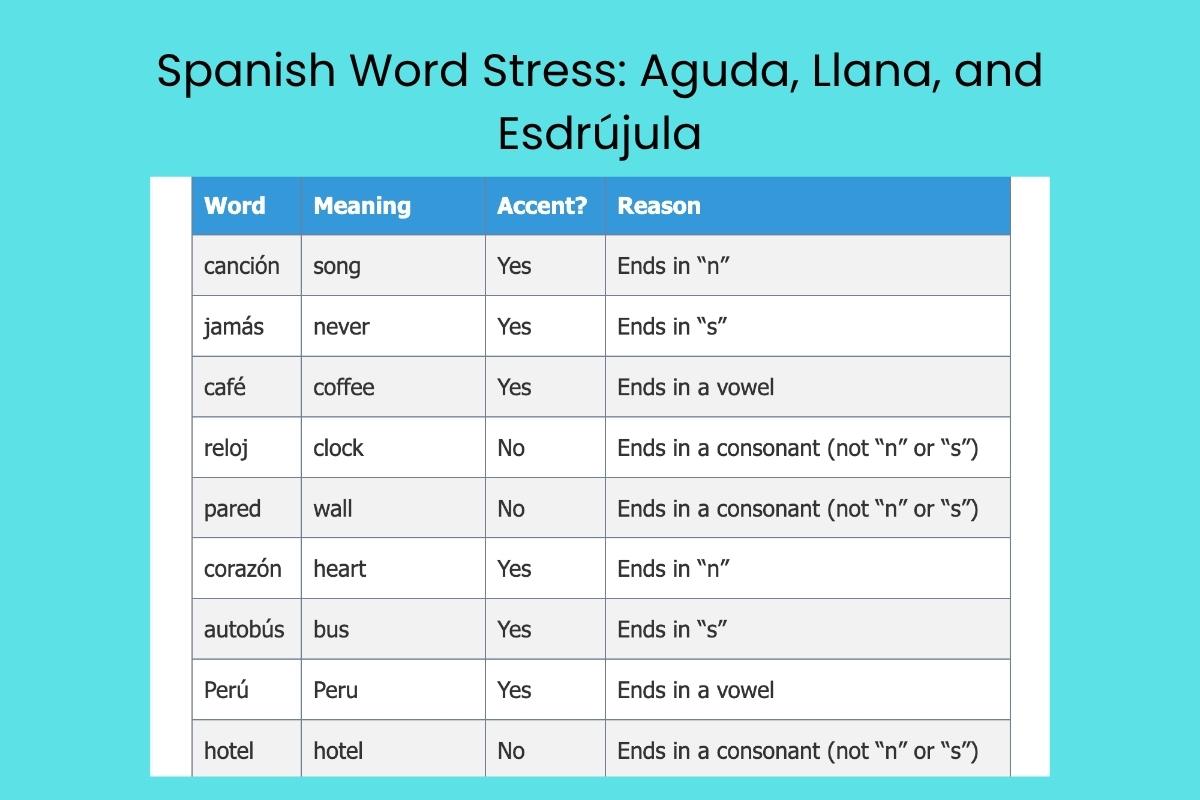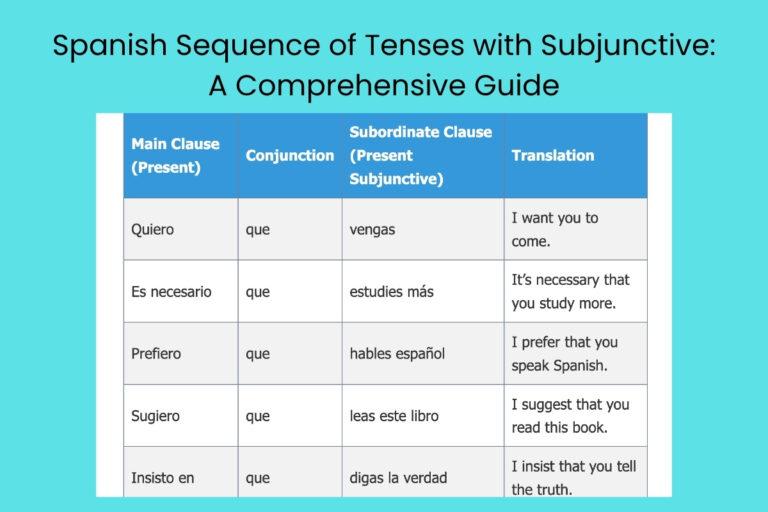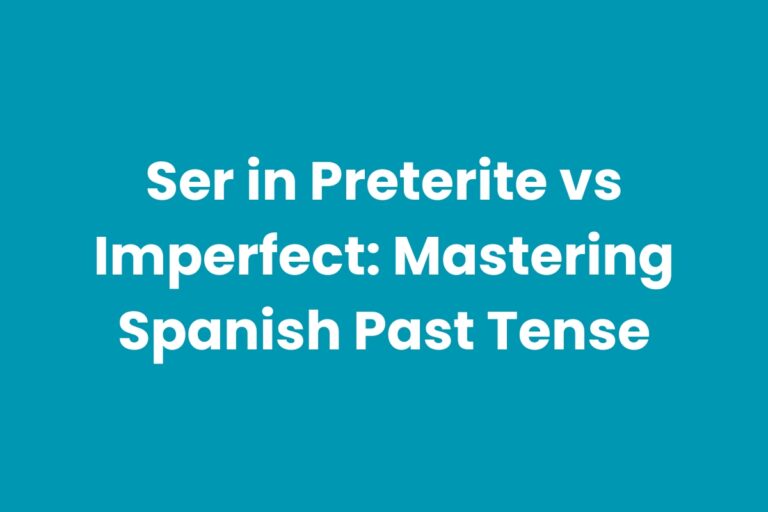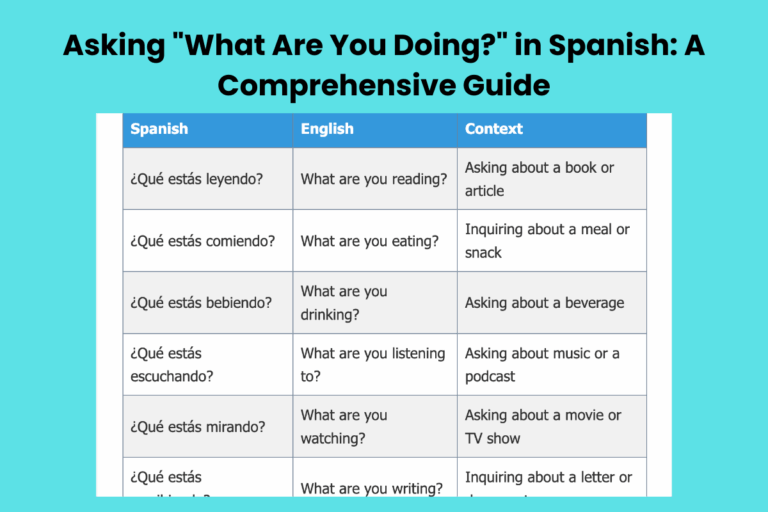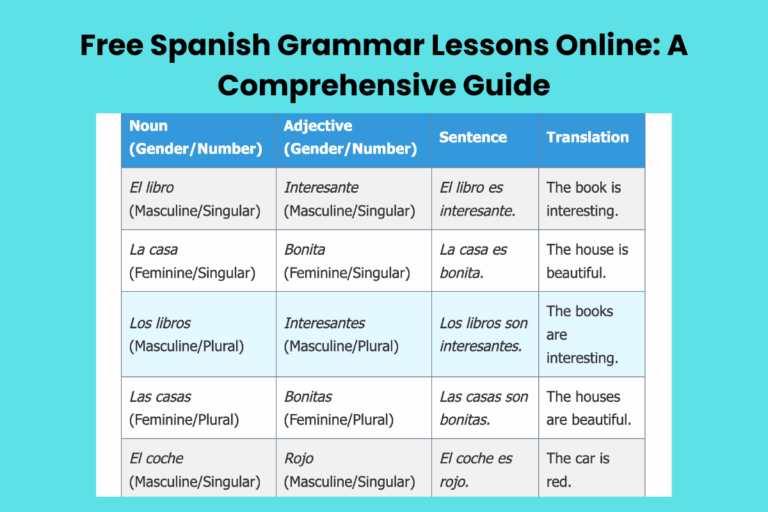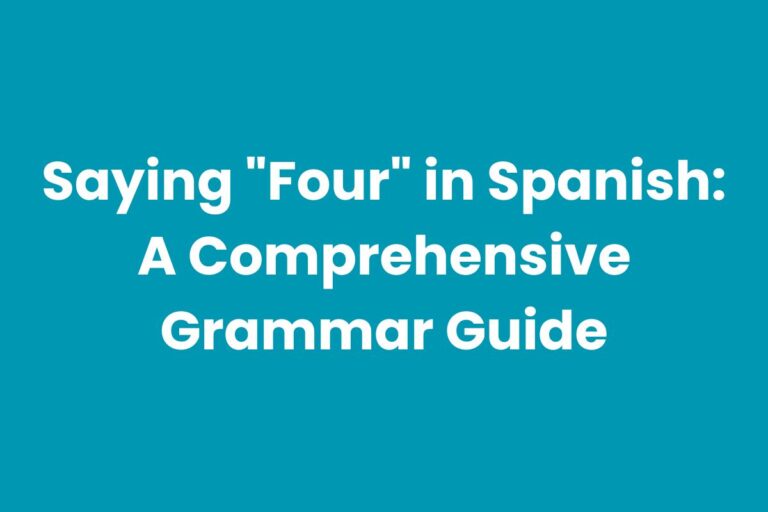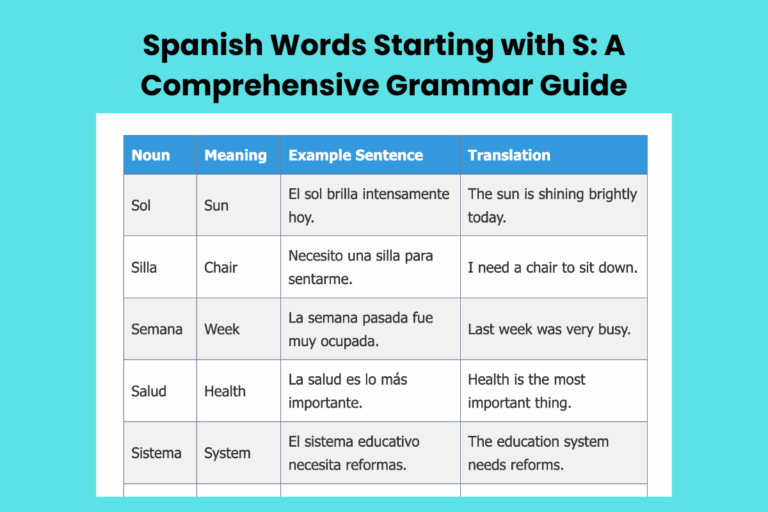Spanish Word Stress: Aguda, Llana, and Esdrújula
Understanding word stress in Spanish is crucial for clear communication and comprehension. Unlike English, Spanish has specific rules that govern where the stress falls in a word. Mastering these rules will not only improve your pronunciation but also help you avoid misunderstandings. This article will delve into the classifications of Spanish words based on stress – aguda, llana, and esdrújula. Whether you’re a beginner or an advanced learner, this comprehensive guide will provide you with the knowledge and practice you need to confidently navigate Spanish word stress.
Table of Contents
- Introduction
- Definition of Spanish Word Stress Classifications
- Structural Breakdown
- Types or Categories
- Examples
- Usage Rules
- Common Mistakes
- Practice Exercises
- Advanced Topics
- FAQ Section
- Conclusion
Definition of Spanish Word Stress Classifications
In Spanish, word stress, also known as prosodic stress, refers to the emphasis placed on a particular syllable within a word. This emphasis affects how the word is pronounced and understood. Spanish words are classified into three main categories based on where the stress falls: aguda, llana (or grave), and esdrújula. Understanding these classifications is fundamental to correct pronunciation and comprehension.
The placement of stress can change the meaning of a word. For example, consider the word “publico.” Depending on where the stress is placed, it can be a verb (público – I publish), a noun (público – audience), or an adjective (público – public). This illustrates the importance of mastering Spanish word stress.
Each category has its own set of rules that determine whether a written accent mark (tilde) is required. These rules are based on the word’s ending and its stress pattern. Mastering these rules will not only improve your pronunciation but also your writing skills in Spanish.
Structural Breakdown
Spanish syllables are formed around a vowel sound, which can be a single vowel, a diphthong (two vowels combined), or a triphthong (three vowels combined). The structure of a syllable typically involves a consonant-vowel (CV) pattern, but other combinations are possible, such as V, VC, CVC, and so on.
When analyzing word stress, it’s crucial to identify each syllable correctly.
To determine the stress pattern, count the syllables from the end of the word to the beginning. The last syllable is the first, the second-to-last is the second, and so on. This counting method is essential for applying the rules of aguda, llana, and esdrújula words.
The presence of a written accent mark (tilde) indicates that the stress falls on the syllable with the accent, overriding any general rules. For example, in the word “canción” (song), the accent mark on the “ó” indicates that the stress is on the last syllable, making it an aguda word.
Types or Categories
Aguda Words
Aguda words are those where the stress falls on the last syllable. These words are also sometimes referred to as “oxítonas.” A written accent mark (tilde) is required if the word ends in a vowel (a, e, i, o, u), the letter “n,” or the letter “s.” Understanding this rule is crucial for correct spelling and pronunciation.
Many verbs in the preterite tense (past tense) are aguda. For example, “habló” (he/she spoke) and “comí” (I ate) are both aguda words and require a written accent mark because they end in a vowel.
Not all aguda words require a written accent mark. If an aguda word ends in a consonant other than “n” or “s,” it does not take an accent. For example, the word “reloj” (clock) is aguda, but it does not have an accent mark.
Llana Words
Llana words, also known as grave or paroxítonas, are those where the stress falls on the second-to-last syllable. A written accent mark (tilde) is required if the word ends in a consonant (other than “n” or “s”). This rule is the opposite of the rule for aguda words.
Many nouns and adjectives are llana. For example, “mesa” (table) and “fácil” (easy) are llana words. “Fácil” requires a written accent mark because it ends in a consonant other than “n” or “s.”
If a llana word ends in a vowel, “n,” or “s,” it does not take a written accent mark. For example, the word “problema” (problem) is llana, and it does not have an accent mark because it ends in a vowel.
Esdrújula Words
Esdrújula words are those where the stress falls on the third-to-last syllable. These words are also referred to as “proparoxítonas.” All esdrújula words require a written accent mark (tilde). This makes them relatively easy to identify.
Many adverbs ending in “-mente” (equivalent to “-ly” in English) are esdrújula when considered independently of the base adjective. For example, “rápidamente” (quickly) is an esdrújula word.
Esdrújula words are less common than aguda or llana words, but they are important to recognize. Examples include “música” (music), “público” (public), and “teléfono” (telephone).
Examples
Aguda Word Examples
The following table provides examples of aguda words, illustrating when a written accent mark is required.
| Word | Meaning | Accent? | Reason |
|---|---|---|---|
| canción | song | Yes | Ends in “n” |
| jamás | never | Yes | Ends in “s” |
| café | coffee | Yes | Ends in a vowel |
| reloj | clock | No | Ends in a consonant (not “n” or “s”) |
| pared | wall | No | Ends in a consonant (not “n” or “s”) |
| corazón | heart | Yes | Ends in “n” |
| autobús | bus | Yes | Ends in “s” |
| Perú | Peru | Yes | Ends in a vowel |
| hotel | hotel | No | Ends in a consonant (not “n” or “s”) |
| feliz | happy | No | Ends in a consonant (not “n” or “s”) |
| comió | ate (he/she) | Yes | Ends in a vowel |
| habló | spoke (he/she) | Yes | Ends in a vowel |
| lección | lesson | Yes | Ends in “n” |
| inglés | English | Yes | Ends in “s” |
| sofá | sofa | Yes | Ends in a vowel |
| balón | ball | Yes | Ends in “n” |
| compás | compass | Yes | Ends in “s” |
| allí | there | Yes | Ends in a vowel |
| tambor | drum | No | Ends in a consonant (not “n” or “s”) |
| animal | animal | No | Ends in a consonant (not “n” or “s”) |
| vivir | to live | No | Ends in a consonant (not “n” or “s”) |
| escribir | to write | No | Ends in a consonant (not “n” or “s”) |
| adiós | goodbye | Yes | Ends in “s” |
| Israel | Israel | No | Ends in a consonant (not “n” or “s”) |
Llana Word Examples
The following table provides examples of llana words, illustrating when a written accent mark is required.
| Word | Meaning | Accent? | Reason |
|---|---|---|---|
| árbol | tree | Yes | Ends in a consonant (not “n” or “s”) |
| fácil | easy | Yes | Ends in a consonant (not “n” or “s”) |
| mesa | table | No | Ends in a vowel |
| problema | problem | No | Ends in a vowel |
| examen | exam | No | Ends in “n” |
| crisis | crisis | No | Ends in “s” |
| azúcar | sugar | Yes | Ends in a consonant (not “n” or “s”) |
| lápiz | pencil | Yes | Ends in a consonant (not “n” or “s”) |
| martes | Tuesday | No | Ends in “s” |
| viernes | Friday | No | Ends in “s” |
| coche | car | No | Ends in a vowel |
| casa | house | No | Ends in a vowel |
| libro | book | No | Ends in a vowel |
| estudiante | student | No | Ends in a vowel |
| difícil | difficult | Yes | Ends in a consonant (not “n” or “s”) |
| útil | useful | Yes | Ends in a consonant (not “n” or “s”) |
| joven | young | No | Ends in “n” |
| orden | order | No | Ends in “n” |
| album | album | No | Ends in a consonant (not “n” or “s”) |
| cesped | lawn | No | Ends in a consonant (not “n” or “s”) |
| caracter | character | No | Ends in a consonant (not “n” or “s”) |
| imagen | image | No | Ends in a consonant (not “n” or “s”) |
| padre | father | No | Ends in a vowel |
| madre | mother | No | Ends in a vowel |
Esdrújula Word Examples
The following table provides examples of esdrújula words. Remember that all esdrújula words require a written accent mark.
| Word | Meaning | Accent? |
|---|---|---|
| música | music | Yes |
| público | public | Yes |
| teléfono | telephone | Yes |
| cámara | camera | Yes |
| árboles | trees | Yes |
| páginas | pages | Yes |
| sábado | Saturday | Yes |
| lámpara | lamp | Yes |
| matemáticas | mathematics | Yes |
| química | chemistry | Yes |
| física | physics | Yes |
| histórico | historic | Yes |
| económico | economic | Yes |
| geográfico | geographic | Yes |
| rápidamente | quickly | Yes |
| fácilmente | easily | Yes |
| únicamente | uniquely | Yes |
| críticamente | critically | Yes |
| práctica | practice | Yes |
| plátano | banana | Yes |
| pájaro | bird | Yes |
| número | number | Yes |
| oxígeno | oxygen | Yes |
| estómago | stomach | Yes |
Usage Rules
General Rules for Word Stress
The general rules for word stress in Spanish are based on the word’s ending and the location of the stressed syllable. If a word ends in a vowel, “n,” or “s,” and the stress is on the last syllable, it’s an aguda word and requires an accent mark. If the stress is on the second-to-last syllable, it’s a llana word and does not require an accent mark.
If a word ends in a consonant other than “n” or “s,” and the stress is on the last syllable, it’s an aguda word and does not require an accent mark. If the stress is on the second-to-last syllable, it’s a llana word and requires an accent mark.
All esdrújula words, where the stress is on the third-to-last syllable, require a written accent mark, regardless of the ending.
Exceptions to the Rules
There are always exceptions to grammar rules, and Spanish word stress is no exception. Certain words of foreign origin may not follow the typical stress patterns.
Additionally, some words can change their stress pattern depending on their function in a sentence.
Words with a hiatus (two vowels next to each other that are pronounced in separate syllables) often require a written accent mark to break the diphthong and indicate that the vowels are pronounced separately. For example, “día” (day) has an accent mark on the “í” to indicate the hiatus.
Demonstrative pronouns (este, ese, aquel) used to have accent marks to distinguish them from demonstrative adjectives. However, the Real Academia Española (RAE) has eliminated the need for these accent marks unless there is a risk of ambiguity.
Diphthongs and Triphthongs
A diphthong is a combination of two vowels pronounced in a single syllable. In Spanish, diphthongs are formed by combining a strong vowel (a, e, o) with a weak vowel (i, u), or by combining two weak vowels.
The stress usually falls on the strong vowel in a diphthong.
A triphthong is a combination of three vowels pronounced in a single syllable. Triphthongs are formed by combining two weak vowels with a strong vowel in the middle.
The stress usually falls on the strong vowel in a triphthong.
When analyzing word stress in words with diphthongs or triphthongs, remember that the entire vowel combination counts as a single syllable.
Hiatus
A hiatus occurs when two vowels that would normally form a diphthong are pronounced in separate syllables. This often happens when one of the vowels is a stressed “i” or “u.” In these cases, a written accent mark is placed on the “i” or “u” to indicate the hiatus.
Examples of words with a hiatus include “día” (day), “río” (river), and “baúl” (trunk). The accent mark breaks the potential diphthong and indicates that the vowels are pronounced separately.
It’s important to distinguish between diphthongs and hiatuses when determining word stress and whether a written accent mark is required.
Common Mistakes
One common mistake is forgetting to apply the accent rules correctly for aguda and llana words. For example, writing “cancion” instead of “canción” or “facil” instead of “fácil.”
Another common mistake is failing to recognize esdrújula words and not adding the required accent mark. For example, writing “musica” instead of “música.”
Misidentifying diphthongs and hiatuses can also lead to errors in word stress. For example, incorrectly assuming that “día” is a single syllable and not adding the accent mark.
Here are some examples of common mistakes with corrections:
| Incorrect | Correct | Explanation |
|---|---|---|
| cancion | canción | Aguda word ending in “n” requires an accent. |
| facil | fácil | Llana word ending in a consonant (not “n” or “s”) requires an accent. |
| musica | música | Esdrújula word always requires an accent. |
| dia | día | Hiatus requires an accent on the “í.” |
| examen (stress on first syllable) | examen (stress on second syllable) | Stress is on the second-to-last syllable, it is llana |
Practice Exercises
Exercise 1: Identifying Word Stress
Identify the stressed syllable in each of the following words. Indicate whether the word is aguda, llana, or esdrújula.
| Word | Stressed Syllable | Classification |
|---|---|---|
| computadora | ||
| árbol | ||
| fácilmente | ||
| reloj | ||
| música | ||
| corazón | ||
| problema | ||
| teléfono | ||
| feliz | ||
| público |
Answers:
| Word | Stressed Syllable | Classification |
|---|---|---|
| computadora | do-ra | Llana |
| árbol | ár-bol | Llana |
| fácilmente | fá-cil | Esdrújula |
| reloj | re-loj | Aguda |
| música | mú-si | Esdrújula |
| corazón | zon | Aguda |
| problema | ble-ma | Llana |
| teléfono | te-lé | Esdrújula |
| feliz | fe-liz | Aguda |
| público | pú-bli | Esdrújula |
Exercise 2: Classifying Words
Classify each of the following words as aguda, llana, or esdrújula and add the written accent mark if necessary.
| Word | Classification | With Accent (if needed) |
|---|---|---|
| examen | ||
| adios | ||
| facilmente | ||
| arbol | ||
| pais | ||
| telefono | ||
| joven | ||
| Peru | ||
| sabado | ||
| leccion |
Answers:
| Word | Classification | With Accent (if needed) |
|---|---|---|
| examen | Llana | examen |
| adios | Aguda | adiós |
| facilmente | Esdrújula | fácilmente |
| arbol | Llana | árbol |
| pais | Aguda | país |
| telefono | Esdrújula | teléfono |
| joven | Llana | joven |
| Peru | Aguda | Perú |
| sabado | Esdrújula | sábado |
| leccion | Aguda | lección |
Exercise 3: Adding Accents
Add the necessary accent marks to the following sentences. Identify any aguda, llana, and esdrújula words.
- Me gusta mucho la musica clasica.
- El examen de matematicas fue dificil.
- Ella siempre bebe cafe por la manana.
- El pajaro canta una cancion alegre.
- Necesito un lapiz y un papel.
- El arbol es muy alto y verde.
- Vamos a comer platano y melon.
- Es facil aprender espanol con practica.
- El telefono suena en la habitacion.
- Compre un autobus para viajar a Peru.
Answers:
- Me gusta mucho la música clásica. (música – esdrújula, clásica – esdrújula)
- El examen de matemáticas fue difícil. (matemáticas – esdrújula, difícil – llana)
- Ella siempre bebe café por la mañana. (café – aguda, mañana – llana)
- El pájaro canta una canción alegre. (pájaro – esdrújula, canción – aguda)
- Necesito un lápiz y un papel. (lápiz – llana, papel – aguda)
- El árbol es muy alto y verde. (árbol – llana)
- Vamos a comer plátano y melón. (plátano – esdrújula, melón – aguda)
- Es fácil aprender español con práctica. (fácil – llana, español – aguda, práctica – esdrújula)
- El teléfono suena en la habitación. (teléfono – esdrújula, habitación – aguda)
- Compré un autobús para viajar a Perú. (compré – aguda, autobús – aguda, Perú – aguda)
Advanced Topics
Enclitic Pronouns
Enclitic pronouns are pronouns that are attached to the end of a verb form. This often occurs with imperatives (commands), infinitives, and gerunds.
When enclitic pronouns are added, the stress pattern of the word may change, and a written accent mark may be required.
For example, consider the verb “decir” (to say). In the imperative form, “di” (say!), if we add the pronoun “me” (to me), it becomes “dime” (tell me). The stress remains on the same syllable, and no accent is needed. However, if we add two pronouns, such as “dímelo” (tell it to me), the word becomes esdrújula and requires an accent mark.
The rules for adding accent marks to words with enclitic pronouns are based on the resulting stress pattern. If the addition of the pronouns makes the word aguda, llana, or esdrújula, the corresponding accent rules apply.
Adverbs Ending in “-mente”
Adverbs ending in “-mente” (equivalent to “-ly” in English) are formed by adding “-mente” to the feminine form of the adjective. These adverbs have a unique stress pattern.
They retain the stress of the original adjective and also have stress on the “-mente” suffix.
If the adjective requires a written accent mark, the adverb retains that accent mark. For example, “fácil” (easy) becomes “fácilmente” (easily).
The accent mark on the “a” is retained.
When analyzing the stress pattern of adverbs ending in “-mente,” it’s helpful to consider the original adjective and its stress. This will help you determine whether a written accent mark is required.
FAQ Section
- What is the difference between aguda, llana, and esdrújula words?
Aguda words have stress on the last syllable, llana words have stress on the second-to-last syllable, and esdrújula words have stress on the third-to-last syllable. The position of the stressed syllable determines the classification of the word.
- How do I know when to put an accent mark on a word?
For aguda words, add an accent if they end in a vowel, “n,” or “s.” For llana words, add an accent if they end in a consonant other than “n” or “s.” All esdrújula words require an accent mark.
- What is a diphthong, and how does it affect word stress?
A diphthong is a combination of two vowels pronounced in a single syllable. The stress usually falls on the strong vowel (a, e, o) in the diphthong. When analyzing word stress, treat the diphthong as a single syllable.
- What is a hiatus, and how does it affect word stress?
A hiatus occurs when two vowels that would normally form a diphthong are pronounced in separate syllables. This often happens when one of the vowels is a stressed “i” or “u.” In these cases, a written accent mark is placed on the “i” or “u” to indicate the hiatus.
- Are there any exceptions to the word stress rules?
Yes, there are exceptions. Some words of foreign origin may not follow the typical stress patterns. Additionally, some words can change their stress pattern depending on their function in a sentence. Words with enclitic pronouns can also have altered stress patterns.
- How do enclitic pronouns affect word stress?
When enclitic pronouns are added to a verb form, the stress pattern
may change. If the addition of the pronouns makes the word aguda, llana, or esdrújula, the corresponding accent rules apply. For example, adding pronouns can turn a word into an esdrújula word, requiring an accent mark.
- How are adverbs ending in “-mente” stressed?
Adverbs ending in “-mente” retain the stress of the original adjective and also have stress on the “-mente” suffix. If the adjective requires a written accent mark, the adverb retains that accent mark.
- What should I do if I’m unsure about the stress pattern of a word?
Consult a Spanish dictionary or online resource that provides pronunciation information. These resources will indicate the stressed syllable and whether a written accent mark is required.
- Why is it important to learn about Spanish word stress?
Understanding word stress in Spanish is crucial for clear communication and comprehension. Incorrect stress can change the meaning of a word or make it difficult for others to understand you. Mastering these rules will improve your pronunciation and your overall fluency in Spanish.
Conclusion
Mastering Spanish word stress classifications—aguda, llana, and esdrújula—is essential for achieving fluency and clarity in the Spanish language. By understanding the rules and exceptions governing word stress, you can significantly improve your pronunciation and comprehension skills. Remember to practice regularly, consult reliable resources when in doubt, and pay attention to the nuances of diphthongs, hiatuses, and enclitic pronouns. With dedication and consistent effort, you’ll be able to confidently navigate the intricacies of Spanish word stress and communicate effectively in Spanish.
